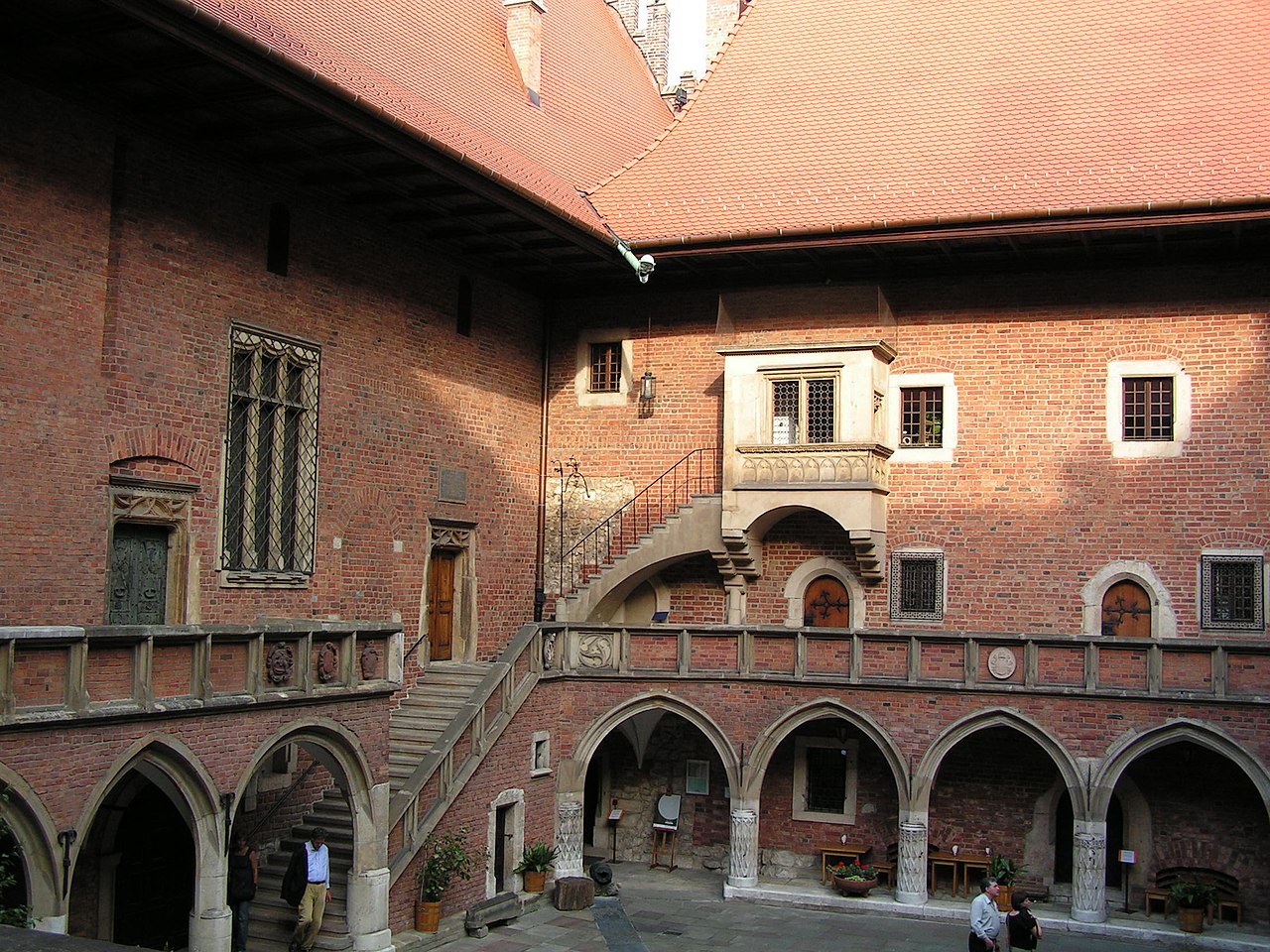 Collegium Novum
Collegium Novum
Ulica Gołębia nazywała się przed XV w. Ostatnią, gdyż na południe od niej stały już tylko mury miejskie. Dziś powinna nazywać się Echodajną, ale zostańmy przy pomyśle Jana Długosza z 1462 r. Na odcinku od Wiślnej do Plant Gołębia mija ważne gmachy UJ: Collegium Minus (nr 11), Kolegium Witkowskiego (nr 13) i Collegium Novum (nr 24). U jej wylotu ukryty wśród drzew stoi pomnik Kopernika z 1900 r. Tak właśnie jego twórca, Cyprian Godebski, wyobrażał sobie wielkiego astronoma jako studenta.
U schyłku XX w. centrum życia akademickiego stanowi neogotyckie Collegium Novum stojące pomiędzy ul. Gołębią a Plantami, w czasie roku akademickiego najbardziej ożywiony gmach UJ. Urzędują tu władze rektorskie, dziekanaty, administracja oraz różne organizacje studenckie i uczelniane.
Gmach wybudowano na miejscu strawionej pożarem bursy zwanej Jeruzalem, którą ufundował w XV w. kardynał Zbigniew Oleśnicki, nie mogąc spełnić zamiaru odwiedzenia Ziemi Świętej. W Novum 6 listopada 1939 r. hitlerowcy przeprowadzili słynną Sonderaktion Krakau, aresztując i wywożąc do obozów koncentracyjnych 183 pracowników naukowych. Wychodzącą na Planty fasadę zdobią herby UJ i zasłużonych dla jego powstania królów polskich: Kazimierza Wielkiego, Jagiełły i Jadwigi. Wewnątrz w ogólnym zamyśle architektonicznym i w detalach odbija się echo Collegium Maius, na którym Novum wzorowano (np. ostro-łukowe portale, kryształowe sklepienia, połączenie czerwonej cegły z białym kamieniem). W auli na I piętrze obok wizerunków wybitnych profesorów UJ wisi słynny portret Mikołaja Kopernika namalowany przez Matejkę.
Na rogu Jagiellońskiej i Gołębiej stoi blady, nieduży budynek Collegium Minus z fragmentarycznie zachowanymi motywami gotyckimi, którego XV-wiecznym przeznaczeniem było służyć naukom wyzwolonym, czyli wydziałowi filozofii. W XIX w. działał tu Wydział Sztuk Pięknych UJ, na którym kształcił się Jan Matejko.
